Life is blossoming here…literally!

Thanks to a grant from the City of Toronto, we began experimenting with different native plants around the property such as wild ginger, black-eyed susans, and wild strawberry.
Initially, the plan was to plant multiple types of sunflowers near each entrance, but we soon learned our neighbourhood’s rabbits love the taste of sunflowers, from the seed to the stem to the petals. The only place to safely grow sunflowers away from our nightly dinner guests, was our courtyard outside the lower level gallery. The seedlings took to the courtyard right away and we realized all the coffee our visitors and staff enjoy in the building provides us with a constant supply of spent coffee grounds which helps fertilize the soil and ward off potential pests. Speaking of pests, slugs and snails became a common sight once the sunflowers had begun to mature. In the spirit of environmental sustainability, wheat bran around the base of each plant is a very effective non-chemical deterrent.
 Considering we’ve never grown sunflowers before, we assumed they would at most be about 3-4ft tall. Imagine my surprise when they shot past me and now stand at about 9ft tall. We all learned about gardening this year, and I have plans and knowledge now to be sure next year the plant life at Holy Blossom will be a success.
Considering we’ve never grown sunflowers before, we assumed they would at most be about 3-4ft tall. Imagine my surprise when they shot past me and now stand at about 9ft tall. We all learned about gardening this year, and I have plans and knowledge now to be sure next year the plant life at Holy Blossom will be a success.





I wondered about the garden. It’s exciting to be using this place for nature to bloom. Coffee grounds are excellent fertilizers. It’s likely a microclimate in that secluded area. Thanks so much for letting us know about the garden.
Coffee grounds are excellent fertilizers. It’s likely a microclimate in that secluded area. Thanks so much for letting us know about the garden.
I wondered about the garden. It’s exciting to be using this place for nature to bloom. Coffee grounds are excellent fertilizers. It’s likely a microclimate in that secluded area. Thanks so much for letting us know about the garden.
Coffee grounds are excellent fertilizers. It’s likely a microclimate in that secluded area. Thanks so much for letting us know about the garden.
Admirable that Holy Blossom has begun transitioning to native plants. It’s so important, particularly as the world undergoes a precipitous decline in pollinators while extreme weather events increase in frequency and intensity..
Admirable that Holy Blossom has begun transitioning to native plants. It’s so important, particularly as the world undergoes a precipitous decline in pollinators while extreme weather events increase in frequency and intensity..